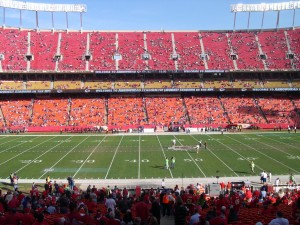

With stadium attendance plummeting, the NFL must elevate its customer experience
From concussions and domestic violence to deflated footballs and debatable discipline, the NFL seemingly has more threats to its mighty brand these days than Cam Newton has in his offensive arsenal.
Yet with more than 114 million Americans expected to tune in to Sunday’s Super Bowl extravaganza — during which TV ads are going for a whopping $5 million per 30-second pop — professional football continues to thrive.
But can that kingdom continue without hordes of fans in the stands?
Surely, the NFL doesn’t want to find out.
Here on the eve of Super Bowl 50, however, a future filled with sparsely populated stadiums is indeed on of the problems pressing Roger Goodell’s league, even as his sport’s television numbers continue to soar.
According to the Sports Business Research Network, the average NFL game in 2014 drew just 64,698 fans, the league’s lowest since 1998. Even more startling, total attendance in 2014 fell to 18,205,000, down from 20,336,000 in 2011 — a drop of more than 2 million in just 36 months.
So, what gives? Well, technology, that’s what. Thanks to it, today’s football fans have little motivation to get off the couch and drop the $479.11 that it now costs on average to take a family of four to a game.
Instead, they can invest in a high-definition television and enjoy a crystal-clear view of the game while shielded from the elements and within a few feet of a fridge stocked with affordable beer and food.
There’s no line at the bathroom. The WiFi is strong. And all the fantasy football stats that they desire are on a laptop in front of them.
So, when the fan experience at home arguably becomes superior to the fan experience in person, what’s a sports league to do? That’s what the NFL needs to figure out.
Continue reading Dave Wischnowsky’s column in our Brand Lab Series …